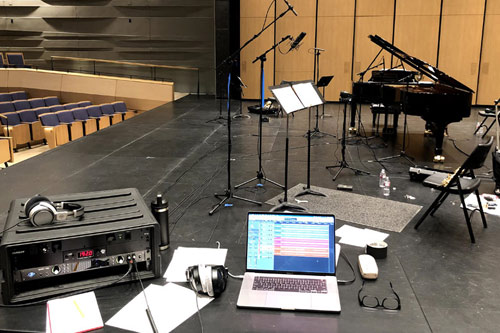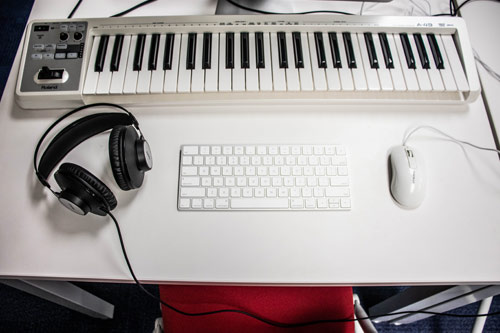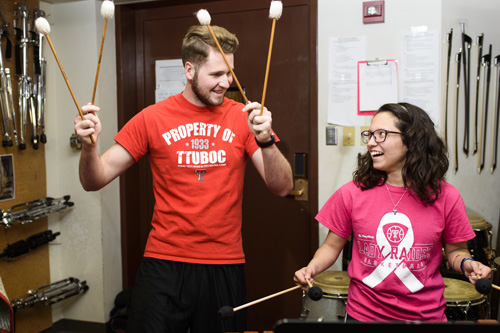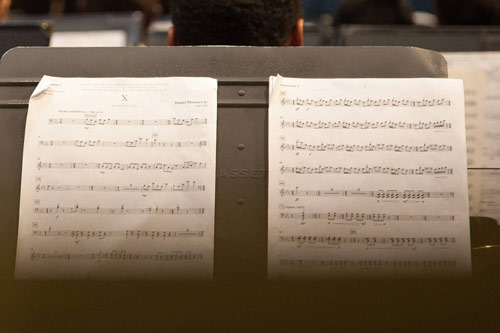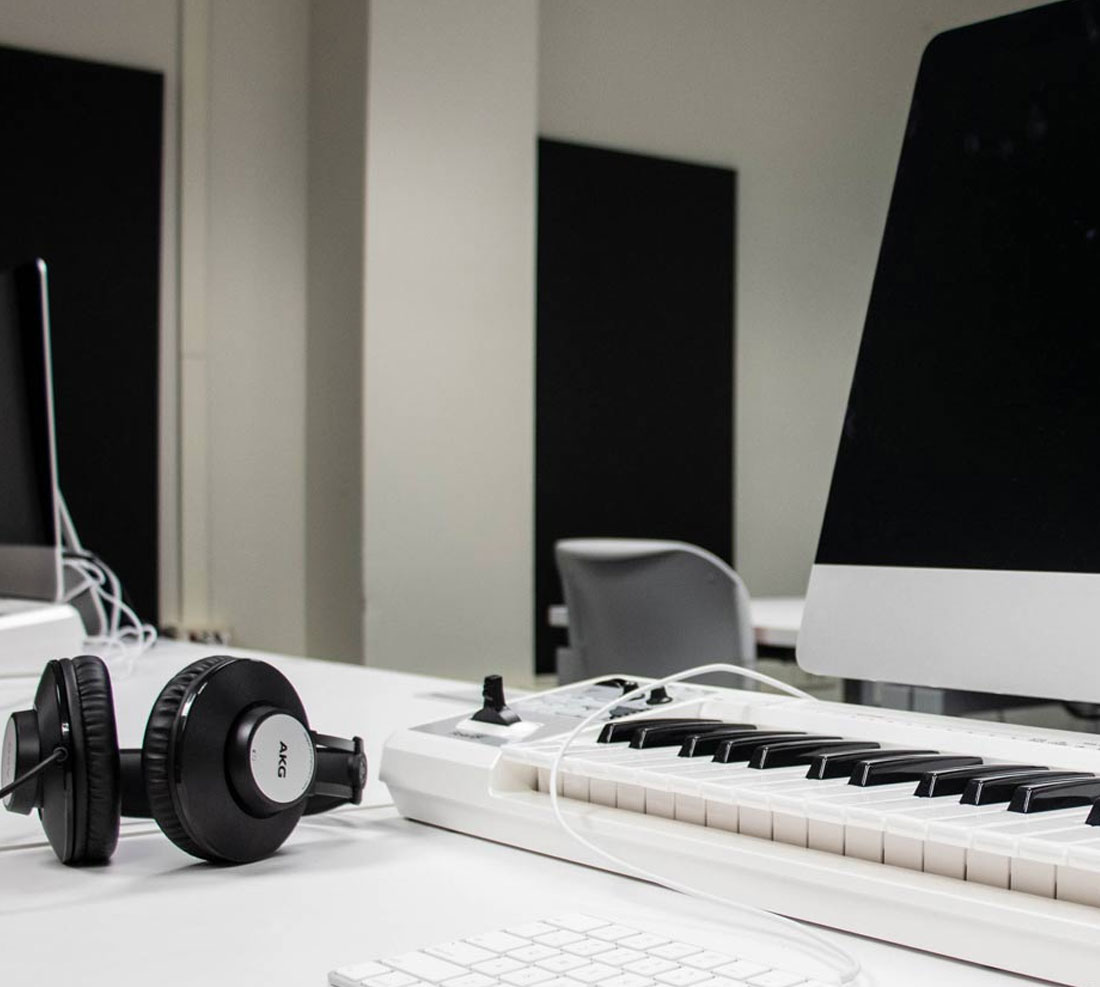
School of Music
Programs of Study
Theory
Programs of Study in Theory
The Theory program at Texas Tech University offers a Bachelor of Music, Master of Music and a Ph.D. in Fine Arts (Music). The Bachelor of Music (B.M) in Theory prepares students specifically for graduate study in music theory, but is often used as a gateway into many other kinds of graduate degrees, as well as other careers post-graduation. The Master of Music (M.M.) in Theory prepares students specifically for doctoral study in music theory, but is often used as a gateway into many other kinds of doctoral programs, as well as other careers post-graduation. The PhD in Fine Arts (Music) degree is an effective preparation for university-level teaching, both within Music and across the disciplines, and also for a range of professional opportunities in arts administration, public scholarship, library and museum studies, and related fields.
The Graduate Certificate in Music Theory Pedagogy prepares graduate music students for teaching music theory at the collegiate level. The Journal of Music Theory Pedagogy reports that 80% of the music theory courses in the US are being taught by people who did not major in music theory. This means that faculty in other areas of music are frequently asked to teach music theory courses. Students who complete this certification will have a tangible record of accomplishment and preparation for these duties. Students in this certificate program will take Pedagogy of Music Theory as well as their choice of three other music theory courses so that they are engaged with current trends in research and curriculum. This certificate is open to all students enrolled in a graduate music degree other than MM-Music Theory and FADP-Music-Music Theory.
graduate exams in Music Theory
The Graduate Theory Placement Exam
All incoming graduate students will take the placement exam in Music Theory before the start of their first semester. Incoming students in graduate Music Theory degree programs (and those that would like to be considered for a teaching assistantship in Music Theory) should take the exam at least one semester prior to the beginning of their program of study.
For further information, please contact Dr. David Forrest.
Please follow this link to download the Graduate Theory Placement Exam Guide.
The Master's Oral Exam
Students approaching their Master's Degree Oral Exam select one member of the theory faculty to serve on their Exam Committee. Typically this will be a faculty member with which the student has taken at least one course, although this is not a necessity. The guidelines below are also available in a separate MS-Word document, available for download by clicking here.
Guidelines for Preparation
In combination with the history committee members, your Theory representative (hereafter "I") will give you 2-3 anonymous scores, from which several types of question will be drawn, as listed below in no particular order. In addition, I may ask you well in advance of the exam date to provide me with a score that you've recently worked on, and draw questions from it as well. These questions will in general be more detailed, given your presumed intimate familiarity with the work.
- The Big Picture: I will ask you to identify the genre and historical period, and suggest possible composers. Support your answer with information from the score (i.e., "It's a big orchestra—there are tubas—so I know it's not Mozart. The harmony is really chromatic, so it's probably a late Romantic symphony. It's marked 'allegro' which means it's likely the first movement.").
- Form and Analysis: I will ask you a mixture of questions on harmony, melody and form. I might ask for a Roman numeral analysis, realization of figured bass, phrase structure and cadences, melodic embellishment, large-scale form (i.e., sonata-allegro; rondo) form, analysis of modulations, identification of interesting chords, etc. I will not ask you anything that you wouldn't have learned in standard undergraduate- and Master's-level theory courses (no Schenker or heavy-duty post-tonal analysis unless you've taken such classes).
- Instrumentation: One of the scores will be a work featuring a large orchestra. I will ask you to translate the names of the instruments (you are responsible for German, French, and Italian). I may also ask you to translate instrument-specific foreign terms and phrases (e.g. if you're a string player, you should know what am Steg means).
- Score Transposition: I will ask you to give me the sounding pitches of some transposing instruments in the large score. I'll only be interested in the most common transposing instruments: clarinets in B-flat and A; English horn; French horn; Trumpet in B-flat. No need to worry, for instance, about the alto flute in G (unless you're an alto flute player).
I will also likely ask you one or two broad questions relating to specific theory courses you have taken during your Master's degree at TTU, particularly if that coursework was done with me. Typically I will ask about something related to your final project in that class. If your project was cooperative learning in the aural skills classroom, be prepared for a question about cooperative learning in the aural skills classroom.
The best way to prepare is to look at scores. Anthologies work best (Burkhart, Bonds, Stolba, NAWM, etc.); the library should have some if you don't. Open the page to a piece of music and start talking about it. I also suggest reviewing any theory class notes that you have, and/or going back through a few theory textbooks (again, the library has plenty if you don't).
Finally, I envision this exam as your chance to demonstrate to your committee that you have the theory skills necessary for someone in your chosen degree path. Different musicians use theory in different ways; this is your chance to show me that you know how to apply that which is most relevant to your day-to-day life as a musician.
The Doctoral Qualifying Exam
Download the Theory Qualifying Exam Study Guide to assist with your preparation.
Sample Analysis Questions
(for Bach, Orchestral Suite #3, I)
- In mm. 1-8, label all chords by name (e.g. CM) and by harmonic function (e.g. V7 –
place both sets of labels underneath the 'Continuo' staff)
- In mm. 1-8, label all non-chord tones in the Oboe I and Violin I parts directly on
the score.
- In m. 7, the oboe and first violin parts have a tendency tone. Which note is the
tendency tone, what kind of tendency tone is it, and how does it resolve?
- Find two descending 5th sequences that occur after the repeat signs on the score,
and label them.
- Looking at the style characteristics of this piece, suggest a possible time period, genre (e.g., "type of composition"), as precisely as you can, nationality of composer, and possible identification of the composer, while making sure to cite relevant style characteristics that support your case.
NOTES:
Some questions require score annotations, and some answers will be strictly written
or typed responses
The final question for each excerpt (here, #5) is exactly the same; your answers to
the previous questions should guide your answer for this one. Don't be afraid to refer
back to these questions in your answer.
In addition to the types of question above, there will be somewhere in the required analysis examples questions on large-scale and small-scale form ("forms" such as rounded binary or sonata form, and phrase/cadence analysis, respectively).
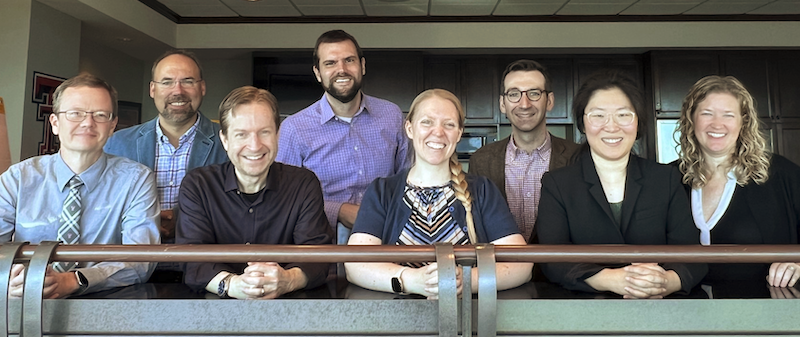 Fall 2024 Music Theory Faculty
Fall 2024 Music Theory Faculty

School of Music
-
Address
2624 18th Street | Box 42033 | Lubbock, TX 79409-2033 -
Phone
806.742.2274 -
Email
schoolofmusic@ttu.edu

